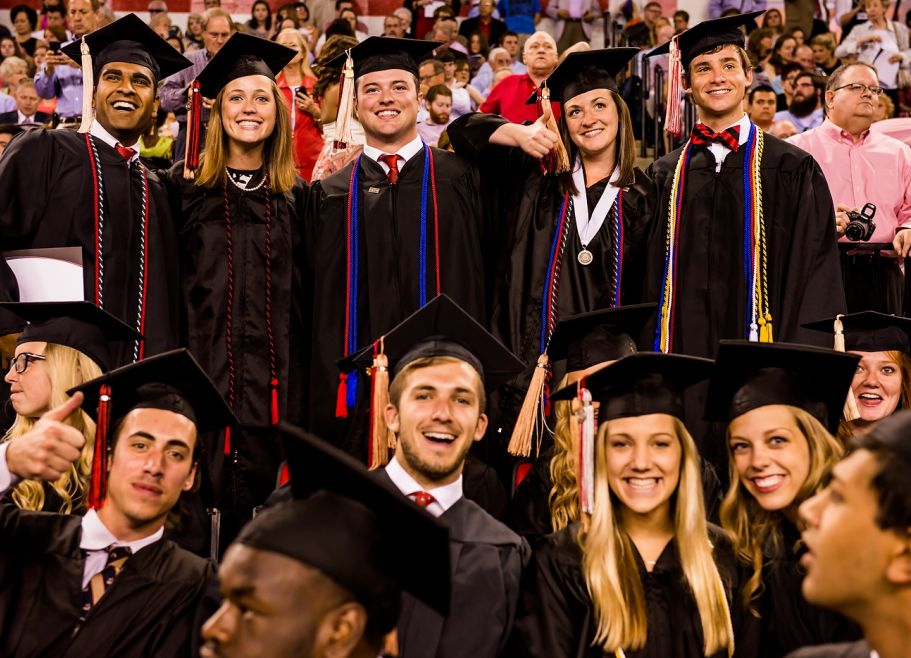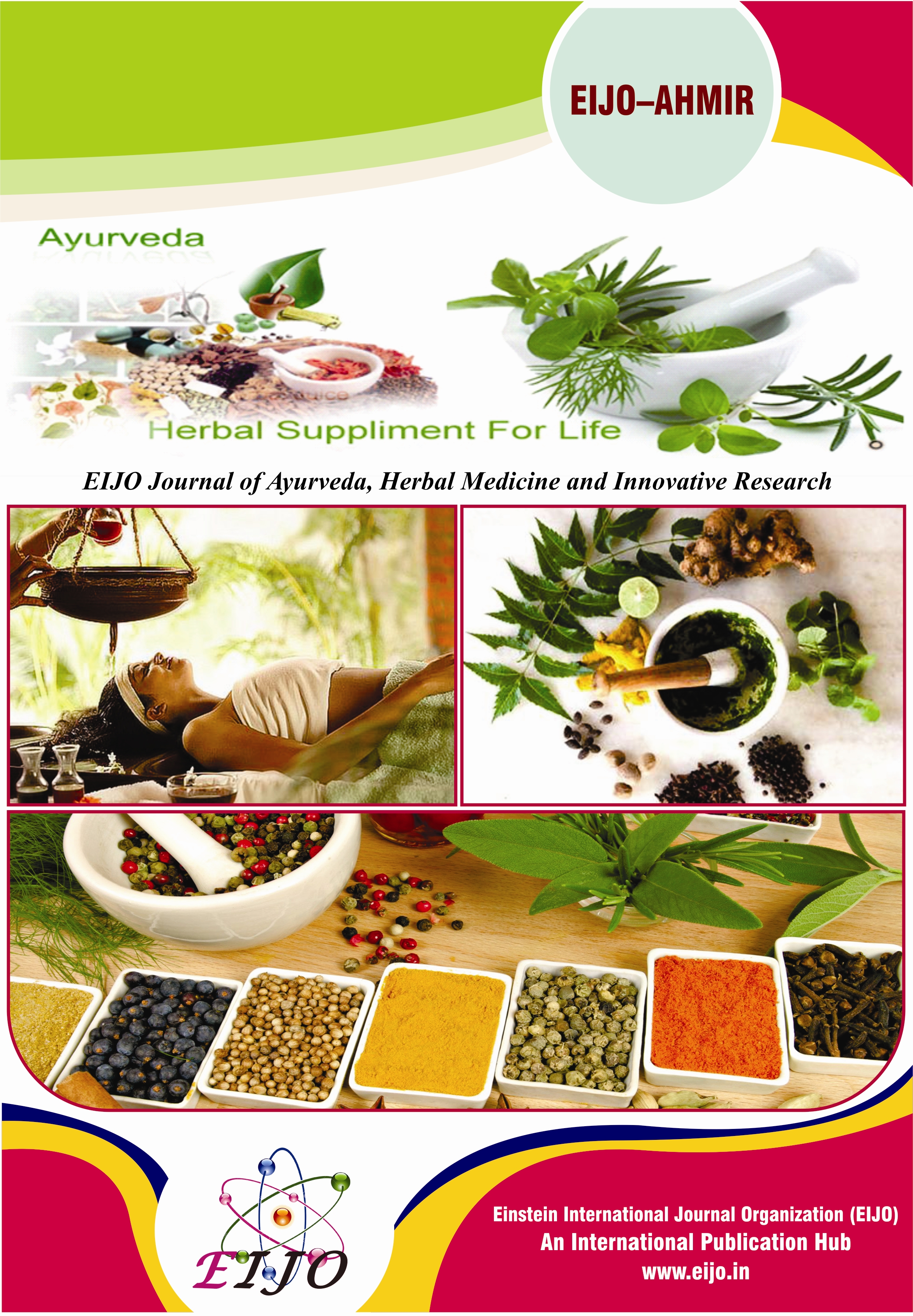JOURNALS || EIJO Journal of Ayurveda, Herbal Medicine and Innovative Research (EIJO – AHMIR) [ ISSN : 2456 - 530X ]
Abstract
Introduction: Different system of medicine or pathways has been evolved globally with respect to time for achieving health which is a prime requirement of human being from past time. Necessity of a better system was fulfilled by the advent of mercurial system or Rasashastra. The concept of Rasashastra can be understood as detailed and scientific study regarding mercury. ‘Rasashastra’ or the ayurvedic alchemy is an important branch of ayurvedic pharmacology. This branch deals with the use of metals, minerals, gemstones and their processing.
Material and Method: References regarding Rasashastra were collected from various classical and Ayurveda published works, published research papers from Pub Med, Google Scholar and compilation was done with the aim of introducing chronological development of Rasashastra.
Aim and Objectives: In ‘Alchemy’, the primary motto was conversion of ordinary metals into gold, which is a higher and valuable metal. The experts applied the same analogy to the human body and found out that the ‘Sharirika Dhatu’ can also been riched in the same way by the use of different metals. This study came to be known as the ‘Dehavada’.
Result: The study of dehavada and the use of metals were successful and it was found that the mercury was very useful and effective when compared to its other mineral and herbal counterparts.
Conclusion: Eventually, Rasashastra became a significant part of Ayurveda and has played a major role in the development of this science in later centuries. If the ayurvedic fraternity preserves the tradition particularly evident in Rasashastra, becomes contemporary by using new technological advances such as nano molecules to further develop and refine drug delivery systems.
Keywords: Rasashastra, Sharirika Dhatu, Ayurvedic Pharmacology, Dehavada.
- Kumar S, Dobos GJ, Rampp T. The significance of ayurvedic medicinal plants. Journal of evidence-based complementary & alternative medicine. 2017;22(3):494- 501.
- Vagbhatta. Rasaratnasamuccaya, chapter 1, verse 9. 5th edition. Varanasi (India): Chowkhamba Sanskrit Series Office. 1976.
- Savrikar S, Ravishankar B. Introduction to ‘Rasashaastra’-the iatrochemistry of Ayurveda. African Journal of Traditional, Complementary and Alternative Medicines. 2011;8(5S).
- Murthy PHC. Rasashastra – the Mercurial System. Varanasi: Chowkhamba Sanskrita Series Office: 7.
- Ali M. A brief history of Indian alchemy covering pre- Vedic to Vedic and Ayurvedic period (circa 400 B.C.- 800 A.D.). Bull Indian Inst Hist Med Hyderabad. 1993; 23(2):151-66.
- Vagbhatta. Rasaratnasamuccaya, chapter 1, verse 6. 5th edition. Varanasi (India): Chowkhamba Sanskrit Series Office. 1976.
- Mishra S. Ayurvediya Rasa Shatra. Varanasi: Chaukhamba Orientalia:21.
- Vagbhatta. Rasaratnasamuccaya, chapter 1, verse 77. 5th edition. Varanasi (India): Chowkhamba Sanskrit Series Office. 1976.
- Vagbhatta. Rasaratnasamuccaya, chapter 1, verse 78. 5th edition. Varanasi (India): Chowkhamba Sanskrit Series Office. 1976.
- Bhatta VD. Verse384. 1994. Kanana Keerti Bhatta Publications. Page 177.
- Vagbhatta. Rasaratnasamuccaya, chapter 1, verse 58. 5th edition. Varanasi (India): Chowkhamba Sanskrit Series Office. 1976.
- Murthy PHC. Rasashastra – the Mercurial System. Varanasi: Chowkhamba Sanskrita Series Office: 20.
- Mishra S. Sri Bhairavoktam Anandakanda; Hindi commentary ‘Sidhhiprabha’-Amritakaran Vishrantao Tririya Ullasa. Varanasi: Chaukhambha Orientalia:42-43.
- Mishra S. Ayurvediya Rasa Shatra. Varanasi: Chaukhamba Orientalia:59-60.
- Murthy PHC. Rasashastra – the Mercurial System. Varanasi: Chowkhamba Sanskrita Series Office: 9-41.
- Vagbhatta. Rasaratnasamuccaya, chapter 1, verse 4. 5th edition. Varanasi (India): Chowkhamba Sanskrit Series Office. 1976.
- Dash SG. Bhaisajya Ratnabali, Jvaradhikara chapter 5 8th edition. Varanasi: Chaukhamba Sanssansthana.1987.
- Bhata GK. Rasendra Sara Sangraha; chapter 1 verse 4 translated into English by Satpute AD. Varanasi: Chaukhambha Krishnadas Academy;
- Vagbhatta. Rasaratnasamuccaya, chapter 1, verse 5. 5th edition. Varanasi (India): Chowkhamba Sanskrit Series Office. 1976.
- Deva S. Rasendra Chudamani, chapter1 verse 33; Hindi Commentary ‘Siddhiprada’ of Mishra SN. Varanasi: Chaukhambha Orientalia.
- Sushruta. Sushrut Samhita. Edited by Shastri AD. Varanasi: Chaukambha Sanskrit Sansthan; 1997.
- Mitra SK, Rangesh PR. Hyperacidity (Amlapitta) In: Mishra LC, editor. Scientific Basis for Ayurvedic Therapies. London: CRC-Press; 2004. pp. 340–353
- Sushruta Samhitaa, Nibandh Sangraha. In: Reprint. Cikitsaa Sthana10/11, 12/11 and 28/15,16. Aacaarya Jadavaji Trikamaji., editor. Vaaraanasi - 221001, India (Sanskrit): Krishnadaas Academy, Oriental Publishers ' Distributors; 1998. commentary by Dalhana.



